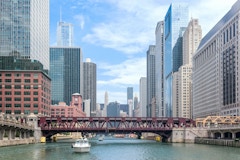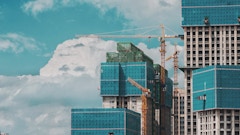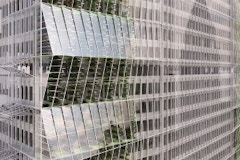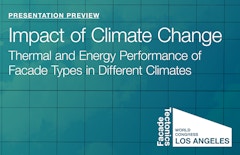
Facade Tectonics Forum: CHICAGO
The Facade Tectonics Institute will make its debut in Chicago on May 23, 2017. The half day forum event will be held at the Illinois Institute of Technology campus.

The Facade Tectonics Institute will make its debut in Chicago on May 23, 2017. The half day forum event will be held at the Illinois Institute of Technology campus.

Deadline: Friday, December 13th, 2019 Qualification and application details are outlined below. We welcome nominations from all current FTI members for candidates currently playing a leadership role in the owner/developer profession.

The Facade Tectonics Institute (FTI) is pleased to announce its new Special Advisory Council (SAC). The Council is comprised of 27 individuals selected through a competitive application process and embody the disciplinary and geographic demographics of the Institute’s membership...


SGH is a national engineering firm offering comprehensive services for our clients' most complex challenges. Our building enclosure projects encompass contemporary and existing facades, waterproofing, and building science.

Gensler is a global design firm that partners with clients to create more livable cities, smarter workplaces, and more engaging leisure destinations. The firm’s 5,000+ professionals networked across 46 locations believe quality design can transform organizations and improve people’s lives.

Kuraray is a world leader in specialty chemicals and functional materials. Kuraray has offices located around the world, including sales offices across North America and four plant locations in the Houston area.

"HPDs for Facade Glass: How Transparent is Transparent?" is an article published by the Advanced Technology Studio of Enclos examining chemical content reporting for glazed products.
Manipulations of glass that have long seemed speculative are becoming possible with combinations of hot or cold bending, thermal or chemical tempering, and lamination.
On October 26th and 27th, the Facade Tectonics Institute assembled a world-class lineup of building facade specialists at the CTBUH 2015 International Conference in New York City.
The Poetry, Pitfalls and Potential of Kinetic Facades is an ongoing series published by the Advanced Technology Studio of Enclos examining kinetic components in building envelopes — often eye-catching, occasionally gimmicky, and almost always a technical and economic challenge.
In a feature posted on fastcodedesign.com yesterday, architect James Timberlake charts a course for making ethical decisions about unsustainable modernist architecture.
The Millennium IGU: A Regenerative Concept for a 1000 Year Insulated Glass Unit is an ongoing series published by the Advanced Technology Studio of Enclos examining the undesirable lifecycle impacts associated with conventional IGU production, use and disposal.

Metals in Construction magazine and the Ornamental Metal Institute of New York named six winning teams for its 2016 Design Challenge yesterday at the Times Center in New York City. “Reimagine a New York City Icon” challenged designers and engineers to reclad 200 Park Avenue in New York.

Inspired by the President’s Climate Action Plan and Architecture 2030 Challenge, Metals in Construction magazine and the OMINY tapped designers in late 2015 to create an eco‐friendly, highly transparent enclosure that preserves the aesthetic integrity of 200 Park Ave.

Historically, the material advantages of aluminum have resulted in its widespread application as curtain wall framing. But amidst the 21st century push for increased energy performance, aluminum is also characterized by problematic thermal properties and a high-embodied energy profile.

Metal-framed glazed enclosures define contemporary architecture. But as our 20th century building stock continues to age, the restoration, rehabilitation and replacement of underperforming facades has created a specialized field of physicists and preservationists.

As global temperatures continue to rise, researchers are examining the building envelope’s impact on climate-specific guidelines to create a more sustainable built environment.

From gothic masonry to the sculptural building facades of today, exposed structural surfaces are often the most defining element of architecture. Increasingly, however, designers sit at a nexus of these aesthetic considerations and performance-driven design.